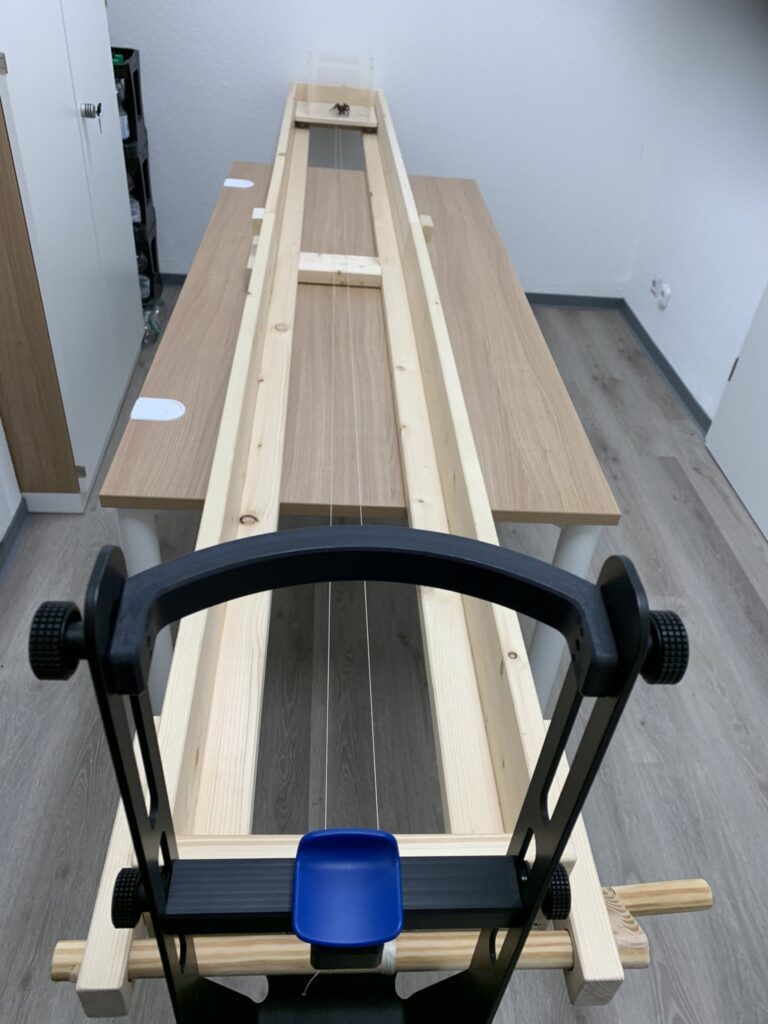This project, led by Florian Grensing, which was developed in cooperation with the Chair of Clinical Psychology at the University of Siegen, is concerned with quantifying the level of anxiety of phobics using physiological data. Among other things, this should support a more objective evaluation of therapies. To this end, phobics were confronted with a real spider and a spider simulated in virtual reality (VR) in four “Behavioral Avoidance Tests” (BAT). In these tests, the phobics are asked to get as close to the spider as they can and want to. The subjective perception of fear is compared with the body’s physiological reaction.
Behavioural Avoidance Tests:
Four BATs were conducted in our study:
VIVO1: In this BAT, the spider in the Plexiglas box was placed on a platform. The test subjects then pulled the spider towards them using a crank system.
VR1: Similar to VIVO1, test subjects have a spider pulled towards them. In this BAT, however, it is a virtual spider that is pulled over a table.
VIVO2: In this BAT, a real tarantula was placed in a Plexiglas box on the window sill of a room. The test subjects then entered the room and walked towards the spider.
VR2: Analog to VIVO2, but in VR.
In all BATs, the test subjects should approach the spider as far as they can and want to, but this is usually not the entire distance. The final distance to the spider serves as a measure of avoidance behavior.

towards the user.
Study design:
The test subjects completed a declaration of consent at the start of the study. They were fitted with an Empatica E4 sensor wristband to collect physiological data. They then familiarized themselves with the controls of the VR application with the help of a tutorial. The four BATs were then carried out in a pseudo-randomized sequence.
After the tutorial and after each BAT, the test subjects completed several questionnaires to assess their psychological state. During the BATs, the test subjects repeatedly indicated how much anxiety they were currently experiencing on a scale from 0 (no anxiety) to 100 (extreme anxiety).
Objectives:
The project has two basic objectives. The first objective is determining whether implementing the BAT in VR offers a valid alternative to classic BATs. The final distances and the results of the questionnaires are used for this purpose.
The second aim is to compare the physiological values of the test subjects with the subjective anxiety values to enable a more objective assessment of anxiety.
Letzte Änderung: 10. February 2025